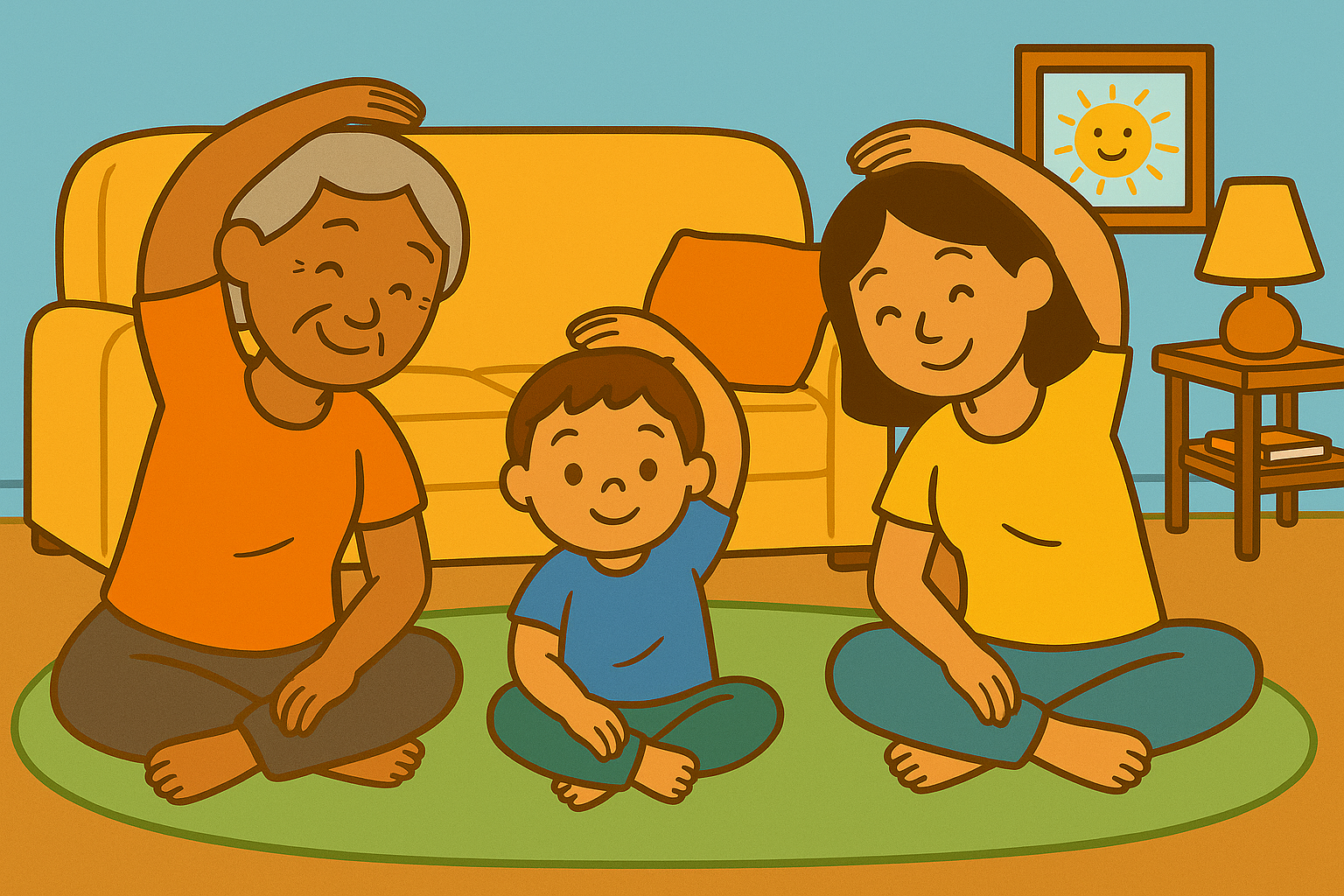How to Create “Anchor Moments” Kids Can Count On
How to Create “Anchor Moments” Kids Can Count On
Children experience time differently than adults do. A day may feel long, unpredictable, or overwhelming—especially when transitions come quickly or without warning. But when families create “anchor moments” throughout the day—predictable, comforting checkpoints—children feel safer, calmer, and more emotionally regulated.
Anchor moments are not full routines. They are small, repeated moments of certainty that hold the day together: the same hug before leaving home, a few minutes of storytelling after dinner, morning stretch time, or a consistent phrase before bedtime. These anchors gently guide children through the unknown and remind them that some things stay steady no matter how busy life becomes.
What Are Anchor Moments?
Anchor moments are recurring experiences that help children feel grounded. They don’t need to be long—they simply need to be familiar.
Examples of anchor moments:
Morning snuggle or stretch
Shared joke or chant before school
Family walk after dinner
Predictable bedtime phrase or sound
Weekly family check-in or planning night
Just a few anchors can reshape the emotional tone of a day.
Why Anchor Moments Support Emotional Security
Children regulate best when they know what to expect. Anchor moments send a message: “You’re safe. Things make sense.”
This closely relates to ideas from The Role of Predictability in Emotional Security, where consistency creates stability and reduces anxiety.
Benefits of anchor moments:
Lower stress during transitions
Stronger family bonds
Increased cooperation
Improved sleep and wake patterns
Easier separation from caregivers
Emotional readiness for tasks
Children feel safer when something inside the day is unchanging.
Sensory Cues Help Anchor Rituals Stick
When anchor moments involve sensory experiences—touch, smell, sound, lighting—they become even more memorable and secure.
Sensory anchor ideas:
Warm light switch for bedtime
Special tablecloth for family meals
Lavender lotion after bath
Morning stretch with soft music
Hand-on-heart breathing moment
Sensory memory builds emotional regulation faster than verbal cues alone.
Anchor Moments in the Morning
Mornings are crucial. Before the day rushes in, even a 30-second anchor can shape mindset and attitude for hours to come.
Morning anchor ideas:
“Good morning stretch” routine (similar to Morning Stretch or Movement Rituals for Kids)
Family hands-together moment before breakfast
Countdown to leaving (“Shoes on in 5… 4…”)
Breakfast blessing, chant, or gratitude moment
Favorite song that plays while prepping backpacks
An anchor at the start sets the tone for what follows.
Midday Anchor Moments (for Home or School)
Midday anchors help children reset after mental or social exertion. Even when away from family, children can lean on familiar routines.
Midday anchors might include:
Deep breath before entering class
“Snack & rest” ritual after school
Quiet corner before homework begins
One-song reset break
Pack-up checklist in visual form
These strategies echo themes from The Importance of Downtime Between Activities, where calmness bridges busy tasks.
Evening Anchor Moments
Evenings benefit deeply from recurring checkpoints. Anchors reduce overstimulation and help the body prepare naturally for rest.
Examples:
Family storytime
“Rose and thorn” daily review
Dim lights + stretch before bath
Singing or humming during cleanup
Shared reading corner
These calm activities reflect ideas explored in Evening Wind-Down Activities That Foster Calm, where ambience supports relaxation.
Weekly Anchor Moments
Not all anchors must happen daily. Weekly traditions can ground children just as deeply.
Weekly anchor suggestions:
Sunday planning evening
Friday fun night
Saturday walk or pancake breakfast
“Goal of the week” moment
Weekly gratitude jar
The rhythm of the week becomes easier to understand when children know what repeats.
Involving Kids in Choosing Anchor Moments
Anchor moments are most powerful when children help design them. When they choose, they engage more deeply.
Ways to include kids:
Pick one morning and one evening anchor
Draw their favorite anchor activity
Name the ritual (“Sunshine Time” or “Peace Corner”)
Choose music, blanket, snack, or activity
Rotate anchor leaders each week
Ownership leads to enthusiasm.
What Anchor Moments Are NOT
Anchor moments should not feel like chores. They should invite peace—not pressure.
Avoid:
Lectures disguised as rituals
Activities that require focus or precision
Extended planning discussions
New chores labeled as “anchors”
Competition between siblings
Anchors should feel restorative, not demanding.
Flexibility Still Matters
Life changes—travel, illness, holidays, unexpected events. Anchor moments must be adaptable, but still recognizable. A shortened version is far better than none at all.
Ways to modify:
Travel-friendly versions (song, breath, phrase)
Shortened cues (“Two deep breaths”)
Zero-material rituals (stretch, hum, hand squeeze)
“Anchor card” in backpack
Bedtime anchor even during sleepovers or trips
Anchors follow the feeling more than the format.
When Anchor Moments Become Identity
Over time, anchor moments evolve from small habits into personal safety signals—a security system children carry with them emotionally. These signals help them grow through change rather than be overwhelmed by it.
Every child deserves these anchors. Not as perfection—just as presence. Because even in a busy day, a moment of predictable comfort can make the difference between overwhelm… and belonging.
This content is for educational purposes and is not a substitute for professional medical or psychological advice.
Popular Parenting Articles


